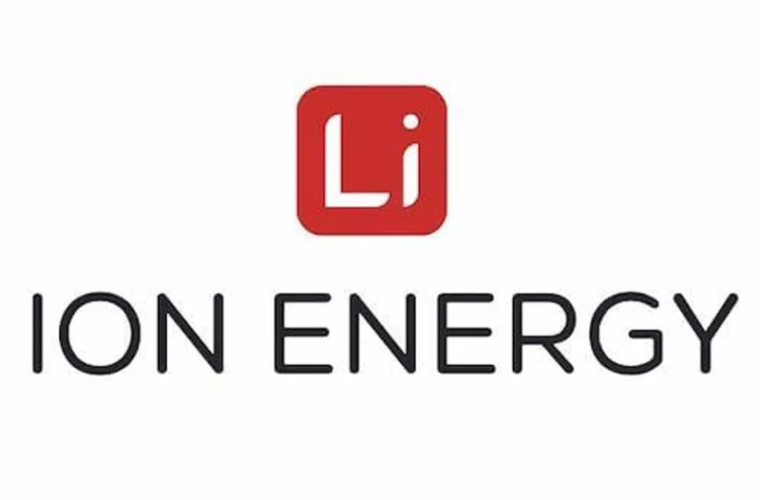
5 Top Weekly TSXV Stocks: Alaska Energy Metals Powers Up with 93 Percent Gain

The S&P/TSX Venture Composite Index (INDEXTSI:JX) lost 0.76 points last week to close at 579.33. Meanwhile, the S&P/TSX Composite Index (INDEXTSI:OSPTX) gained 59.82 to close at 22,814.81.
The US Bureau of Economic Analysis (BEA) released its advanced GDP estimates for Q2 2024 this past Thursday (July 25). The data showed the economy grew 2.8 percent in the May to June period, higher than the 1.4 percent increase seen in the first quarter of 2024.
Increases in spending in the service sector saw contributions from health care, housing and utilities, while higher spending for goods came from auto sales, recreational goods and furnishings.
The BEA also released June’s personal consumption expenditures index data this past Friday (June 26). In that release, the bureau indicated further easing of inflation with June reporting a year-over-year increase of 2.5 percent, down from May’s increase of 2.6 percent.
The index is a favored measure by the Federal Reserve in tracking progress as it works to bring inflation down to its 2 percent target rate. The central bank will use the figures to determine rate changes when it meets next Tuesday and Wednesday. While most analysts do not see the Fed making any changes yet, the new data has increased sentiment for cuts in September.
Equity markets saw broad gains above 1 percent on Friday but were mixed over the past week.
The S&P 500 (INDEXSP:.INX) was down more than 1 percent, finishing the week at 5,459.09 points. The Nasdaq-100 (INDEXNASDAQ:NDX) was down sharply following a rout of tech stocks in the aftermath of the Crowdstrike (NASDAQ:CRWD) outage on July 19, losing 3.65 percent on the week closing out Friday at 19,023.66. Meanwhile, the Dow Jones Industrial Average (INDEXDJX:.DJI) saw a modest gain of 0.43 percent to close at 40,589.34.
The S&P GSCI (INDEXSP:SPGSCI) commodity index also saw losses this week losing around 1 percent on the week to trade at US$549.27 this past Friday. Precious metals were also down with silver falling 4.44 percent ending the week trading at US$27.92 and gold shedding 0.58 percent to end the week at US$2,386.74.
How has this affected small-cap mining companies on the TSX Venture Exchange? These are the top 5 gainers from the past week.
1. Alaska Energy Metals (TSXV:AEMC)
Weekly gain: 93.1 percent; market cap: C$31.28 million; share price: C$0.28
Alaska Energy Metals is an exploration company working to advance its critical mineral properties in Alaska, US, and Quebec, Canada. The company’s flagship property, the Nikolai project, is located in Southeast Alaska and hosts the Eureka deposit. In a resource estimate from a technical report published in February, the company reported contained indicated values of 3.88 billion pounds of nickel, 1.28 billion pounds of copper, 303 million pounds of cobalt along with 4 million ounces of platinum from 813 million metric tons.
The company also owns the Angliers project located in western Quebec. The site is composed of 464 mineral claims covering an area of 26.417 hectares in a region known to host mineralized bodies of nickel, copper, platinum group metals, gold, molybdenum and zinc. The company announced on June 5, that it had acquired the adjacent Bambino nickel and copper property which would add 57 new claims over 3,320 hectares.
The most recent news from the company’s projects came on July 16, when it announced the start of a drilling program to test geochemical targets at the Canwell block at its Nikolai project.
2. Nevada King Gold (TSXV:NKG)
Weekly gain: 44.23 percent; market cap: C$121.94 million; share price: C$0.375
Nevada King Gold is a gold exploration company focused on the advancement of its Atlanta Gold project in southeast Nevada, US. The property is home to a past-producing open-pit gold mine that produced 110,000 ounces of gold and 800,000 ounces of silver between 1975 and 1985.
The site consists of six primary zones, and according to a 2020 resource estimate hosts measured and indicated quantities of 460,000 ounces of gold and 4.22 million ounces of silver from 11 million metric tons of ore, with additional inferred values of 142,000 ounces of gold and 1.24 million ounces of silver from 5.31 million metric tons of ore.
In a project update released this past Tuesday (July 23) the company reported drill results that included a highlighted intercept of 6.28 grams per metric ton (g/t) gold over 54.9 meters. The company said mineralization from the interval was consistent over its entire length and that it was the most important hole drilled at Atlanta to date.
The most recent news from Nevada King came this past Friday, when the company announced that it had received final approval from the Supreme Court of British Columbia to spin out its non-Atlanta projects. The deal will see its other properties including, Lewis, Horse Mountain – Mill Creek, and Iron Point projects spun out to shareholders. The new company will also retain a 3 percent smelter return royalty on all gold and silver production from Atlanta.
3. Abcourt Mines (TSXV:ABI)
Weekly gain: 42.86 percent; market cap: C$24.73 million; share price: C$0.05
Abcourt Mines is a gold exploration and development company focused on operations at its Sleeping Giant mine in the Abitibi region of Quebec, Canada. The mine property consists of four mining leases covering an area of 458 hectares and 69 claims. The site hosts an underground mine along with a mill capable of processing 750 metric tons per day.
The company also owns the Pershing-Manitou gold exploration project also located in the Abitibi region is composed of 322 claims covering an area of 12,307.55 hectares. Abcourt has been carrying out bulk sampling using the mill at Sleeping Giant.
On July 10, the company announced that Sleeping Giant had produced 327.6 ounces of gold from 1,428 metric tons and also produced 140 ounces from 5,000 metric tons acquired from the bulk sampling program at Pershing-Manitou. The company said it would be using the mill to process development material to access new stopes.
The most recent news from Abcourt came this past Thursday when the company announced the closing of C$4.5 million private placement. The company said funds would be used for exploration and development at Sleeping Giant.
4. Volt Lithium (TSXV:VLT)
Weekly gain: 34.92 percent; market cap: C$54.62 million; share price: C$0.425
Volt Lithium is a lithium development and production company working to advance its Direct Lithium Extraction (DLE) technology. The company is currently operating in the Permian Basin to develop its DLE technology which will allow it to extract battery grade lithium from oilfield brines. Oilfields in the basin produce 19 million barrels of brine per day.
The most recent news came on July 17 when it announced it had scaled up its processing capabilities at its field simulation center in Calgary, Alberta, Canada to 96,000 litres per day with lithium recovery rates of up to 99 percent from brine concentrations as low as 31 milligrams per litre. The company said it’s a significant milestone and will allow it to build and deploy its first field unit during Q3 2024.
5. Founders Metals (TSXV:FDR)
Weekly gain: 28.7 percent; market cap: C$183.96 million; share price: C$2.87
Founders Metals is a gold exploration company working to advance exploration efforts at its Antino Gold project in southeast Suriname. The property covers 238 square kilometers and has the necessary permits for drilling and mining. The site has previously hosted small-scale open pit mining operations with approximately 500,000 ounces of gold having been extracted.
Results from the company’s most recent exploration activities were reported this past Monday (July 22) when it reported highlighted assays of 5.31 g/t gold over 46 meters which included 12.05 g/t gold over 10 meters. The company said results expand on previously identified mineralization 150 meters east of the main Froyo zone and intends to continue exploration of the parallel zone over the coming weeks to explore strike and depth.
FAQs for TSXV stocks
What is the difference between the TSX and TSXV?
The TSX, or Toronto Stock Exchange, is used by senior companies with larger market caps, while the TSXV, or TSX Venture Exchange, is used by smaller-cap companies. Companies listed on the TSXV can graduate to the senior exchange.
How many companies are listed on the TSXV?
As of September 2023, there were 1,713 companies listed on the TSXV, 953 of which were mining companies. Comparatively, the TSX was home to 1,789 companies, with 190 of those being mining companies.
Together the TSX and TSXV host around 40 percent of the world’s public mining companies.
How much does it cost to list on the TSXV?
There are a variety of different fees that companies must pay to list on the TSXV, and according to the exchange, they can vary based on the transaction’s nature and complexity. The listing fee alone will most likely cost between C$10,000 to C$70,000. Accounting and auditing fees could rack up between C$25,000 and C$100,000, while legal fees are expected to be over C$75,000 and an underwriters’ commission may hit up to 12 percent.
The exchange lists a handful of other fees and expenses companies can expect, including but not limited to security commission and transfer agency fees, investor relations costs and director and officer liability insurance.
These are all just for the initial listing, of course. There are ongoing expenses once companies are trading, such as sustaining fees and additional listing fees, plus the costs associated with filing regular reports.
How do you trade on the TSXV?
Investors can trade on the TSXV the way they would trade stocks on any exchange. This means they can use a stock broker or an individual investment account to buy and sell shares of TSXV-listed companies during the exchange’s trading hours.
Data for this 5 Top Weekly TSXV Performers article was retrieved at 11:00 am PST on July 26, 2024, using TradingView’s stock screener. Only companies with market capitalizations greater than C$10 million prior to the week’s gains are included. Companies within the non-energy minerals and energy minerals were considered.
Article by Dean Belder; FAQs by Lauren Kelly.
Securities Disclosure: I, Dean Belder, hold no direct investment interest in any company mentioned in this article.
Securities Disclosure: I, Lauren Kelly, hold no direct investment interest in any company mentioned in this article.




